Increasing the rankings of your website has been a heavy lifting task…since forever. And you have a lot of keywords and phrases that you’re going after for a chance of showing up in top 10 results in Google.
Not once has it happened to you to think that you’ve created the best piece of content possible, but then only to get it lost in the big pile of data out there.
While many SEO pros consider it is recommended to target every page for one keyword, it is better to have the best content on the web optimized for more than one keyword in a lot of situations and industries.
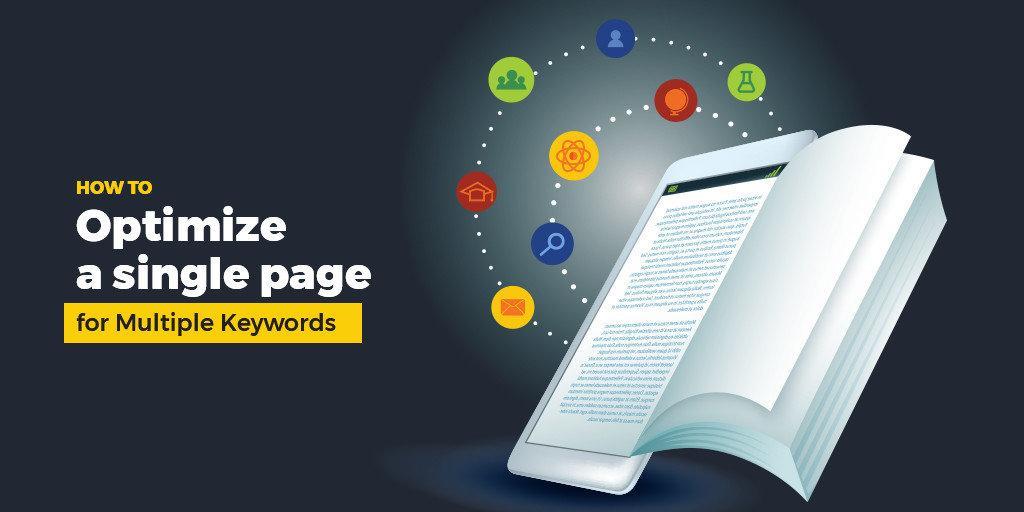
And today is the day you’ll find how to succeed at multiple keyword optimization for a single page. We’ve gathered some great insights from studies and practices. So, take your time and learn how to:
Phase 1: Pre-Optimization Process for the Whole Website
- Perform a Content Audit to Achieve Higher Conversion Goals
- Create a Content Strategy Regarding Your Current Content
Phase 2: The Optimization Process for the Published Content
- Seek for Keywords Recommendations Through a Keyword Research
- Start the On-Page Optimization for Multiple Keywords
- Index Your Content Faster With the Fetch as Google Tool
- Promote Your New Content
Content optimization is never an easy job or a stand-alone process. There are more options to optimize your content for multiple keywords. In case you want to apply this strategy for the whole website, then you need to follow the whole steps. But if you decide that this is the strategy you want to follow for the articles you’ll publish starting from now, then you need to follow only the last four steps.
Phase 1: Pre-Optimization Process for the Whole Website
1. Perform a Content Audit to Achieve Higher Conversion Goals
A content audit is mandatory if you have a site that suffered a lot of changes over the years and you didn’t follow the same content “prescription” from the beginning, maybe you didn’t even follow any rules, not to mention a content strategy. Before starting any optimization process, you need to start making a content audit to understand where you’re standing at.
If you want to do a good job and optimize your content for multiple keywords, there is no point in writing new pieces if you already have lots of blog posts you could revive. Select the content that is still relevant and re-optimize that one. Otherwise, you may risk having articles about the same topic. Content pruning can help you optimize your content.
The first step is to find the content that needs to be better optimized to get a chance to stand in the top 10 Google results.
If you’ve had a large website for a quite some time, inevitably you’ll have outdated content. It is mandatory to scan your website. It might seem as a painstaking task, but it will save you big time in the future.
Crafting content has never been an easy job. Stop acting like it is a piece of cake and start learning how to make a comeback with awestruck content. You need to start making a change if you want to increase your website’s rankings.
| Thinking you are doing content marketing by just creating the content, is a bit like thinking you are building a house by just holding the hammer. | |
| lisa myers | |
| Founder and CEO of Verve Search / @lisadmyers | |
There is also a high chance the first articles were written from a rookie perspective. Let’s not forget that there were times when writing was cool and you could take all sort of shortcuts to rank higher in Google; shortcuts such as thin content, over-optimized articles and a lot more.
| When everyone is doing the same thing, it’s easy to be buried in the mountain of rubbish that also gets called “content marketing”. | |
| LISA MYERS | |
| Founder and CEO of Verve Search / @lisadmyers | |
Just like Lisa mentions it, your content must attract attention and be the best piece of content on the internet. Don’t toss another piece of useless blog post over the pile.
Start by making a list of the content that requires on-page optimization, needs to be changed or deleted. Then go through all of your website’s dark corners to spot the old content.
At this stage, look at every page;. you should check the conversion scores but also the vanity metrics.
After you marked your web pages accordingly, you have to take the next steps in this cleaning content process.
2. Create a Content Strategy Regarding Your Current Content
Creating a content strategy is the key in the content restoration process. What you have to do at this point is similar to a content matrix procedure, where you need to prioritize content and evaluate the situation.
Make a plan for the need-for-improvement content. At this point, you have to create a content strategy. You can not go after the old habits, procedures and common SEO mistakes.
The content marketing strategy should have a guidebook you could follow for each article. You may want to:
- include main goals: publishing period, main focus, link building techniques, on-page SEO approach;
- establish the purpose and triggers for your content;
- build topic discovery + content creation process;
- choose a framework/formula you have to follow thoroughly each time;
- create a content amplification action plan;
- use social media for promoting your content;
- plus other steps, tricks and SEO tips you consider meaningful.
When you decide to establish the purpose for your content make sure you keep the target in mind. What are you aiming for? Try to pin down the right topics to engage and intrigue your target audience.
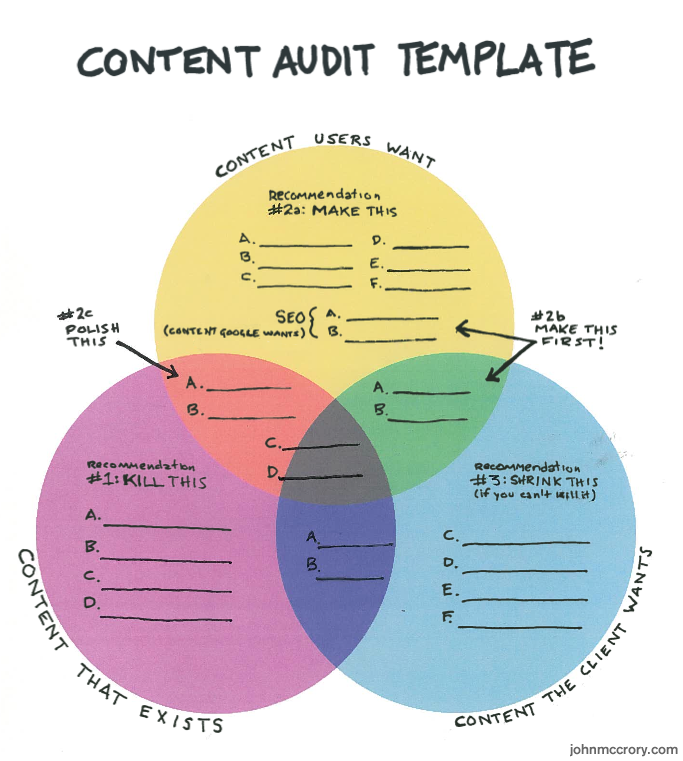
Source: www.contentmarketingup.com
You have the list with the content that needs to be revitalized. You need to categorize each blog post to see:
- which one needs improvement;
- which one is outdated, not relevant or has no traffic and:
- needs to get redirected to another piece of content;
- needs to be made private or deleted;
Before taking any actions, let’s dig into that. Use the Content Assistant to establish which is the status for each article and find the category where it should be placed (the ones mentioned above).
The Content Assistant will guide users to see what improvements can possibly be achieved for each piece of content.
Aligning your treatment for a topic with the needs that motivate your readers is a vital element in content planning.
Start creating blockbuster content. It is more powerful than the conventional ‘good enough’ approach. Make this idea your best friend. Blockbuster content is created by respecting a few guidelines:
- it has specific goals;
- it breeds an exponentially larger audience;
- it is sustainable, you can share them year after year;
- they’re twice as long as regular ones.
Most importantly, the blockbuster content fills an information gap as it elaborates a topic that nobody has approached.

Source: www.beseminal.com
Michael Simmons, founder of Seminal, a best-selling author, and a contributor to Entrepreneur, Inc. and a lot of other important publications explains more on this topic. Learn from the expert:
| In the world of online content creation, the blockbuster approach has not yet become a standard practice. The barrier to creating blockbuster content is very low. This gap is your opportunity. This gap will not be open for a long time. | |
| Michael Simmons | |
| Founder of Seminal / @michaeldsimmons | |
An article that follows these guidelines has a chance to be the winner-take-it-all market.
Follow the natural flow of content marketing:
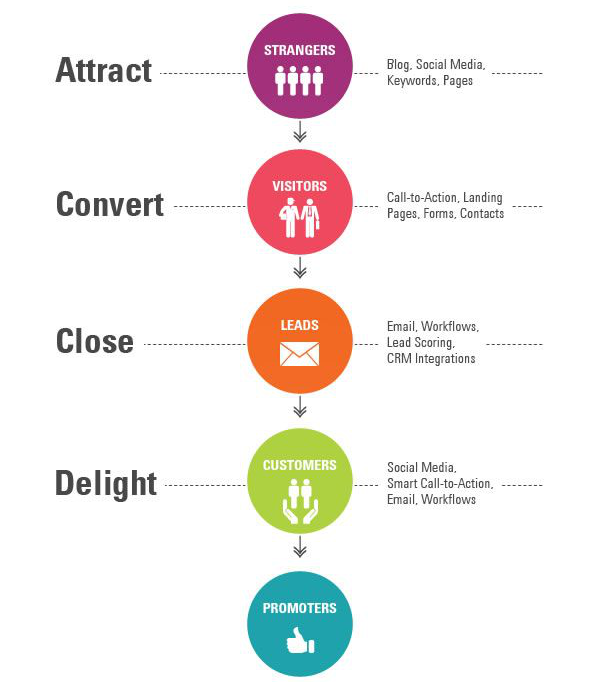
Source: www.hubspot.com
Phase 2: The Optimization Process for the Published Content
3. Seek for Keywords Recommendations Through a Keyword Research
This step is very important. Mainly because if it the first move you take if you decide that the content optimization process for multiple keywords is applied only to the articles that will be publishing from the present moment.
First, you need to create a vocabulary. Think about it this way: if you were to talk with somebody about volleyball you might hear words such as field, team, hit, coach, serve, attacker, baseline, block solo, pass, jump serve, outside and so on.
Use the natural language patterns because that creates relevance in search engine algorithms.
Use the Keyword Tool and search for related keywords for your topic. Create a list of similar keywords that your content could rank.
Other good places for inspiration are dictionaries, thesauruses, search results for topic-related terms, top rankings pages, Wikipedia, Google auto-suggestions and related searches from Google (see picture below).
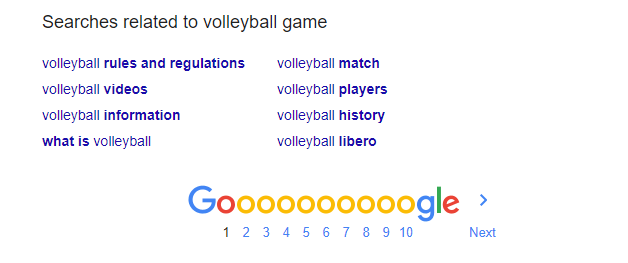
Second, take each content and make a keyword research to see recommendations and create clusters to optimize content on the website for multiple keywords that are relevant and similar. Select top 3 keywords and optimize for content for those. You should have more than 3 keywords.
The Keyword tool will get an abundance of new ideas for content improvements and Content Assistant will help you crank it out faster than you have ever thought possible.
Selecting the right keywords for your content might help you reach the purpose of your content. So be very careful at your selections because they can lead to fulfilling your goal or not.
The differences come from selecting the local rank tracking or not. There is a difference between a keyword that has the name of the location in it but doesn’t have the location set up (example of keyword: real estate school in Chicago) and one that doesn’t contain it and the keyword but does have the location set up (example of keyword: real estate school).
In this particular situation, you have two options:
- If you want to target only the people in Chicago and not other cities in Illinois, my recommendation would be to choose the “real estate school” and set the local tracking.
- In case you want to target other cities besides Chicago, you should choose the option to track “real estate school in Chicago”.
In Keyword Tool, you can do that if you go and select “Containing filter” to see the keywords recommendation for those who contain the keyword “Chicago”.
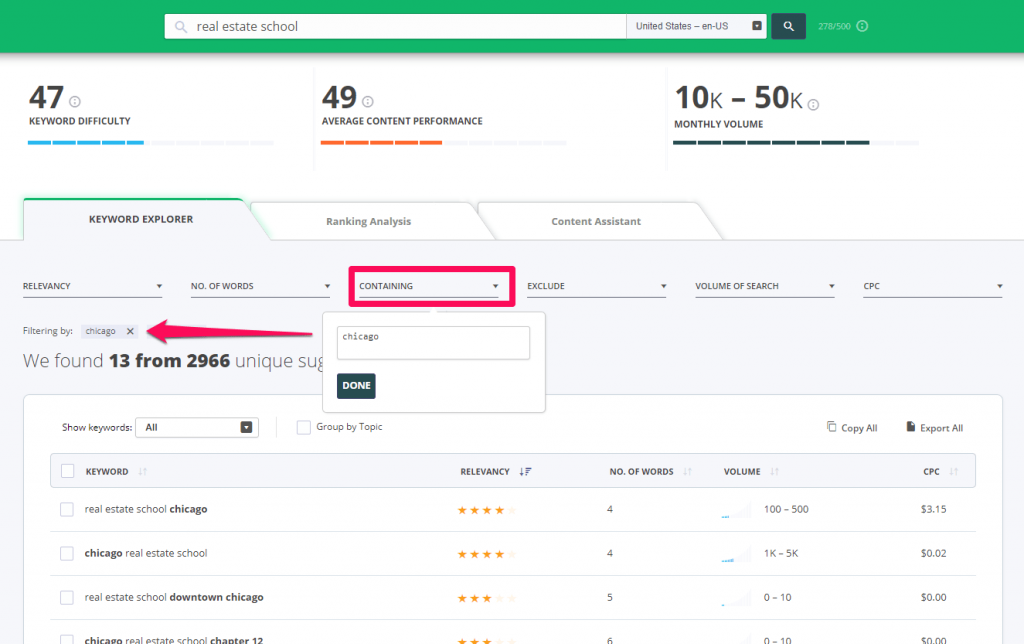
The solution for these situations is to aim for both keywords in the same content. You can optimize it once for “real estate school” and the second time for “real estate school in Chicago”.
A strong recommendation for both situations would be to set up an account into Google My Business. The results from Google Maps stand before the results in search.
Third, don’t forget about the searcher’s intent. Think from the perspective of the searchers. What is their intent? Do you know what type of information they seek? The content that needs improvement is the one that stirs up the curiosity of the searcher.
Fourth, the keywords used in a single piece of content must have a logical sense from the searcher perspective. It should be matching keywords because it will come in handy for targeting multiple keywords on a single page.
Don’t target too many keywords, because at some point they might differ and you could spook your visitors. They will come, visit your websites, then pogo stick away leading to high bounce rate. This will alert Google that your page is an example of bad quality.
4. Start the On-Page Optimization Process
The next step of the content restoration process after keyword research is the actual on-page optimization process. There are 3 easy steps you need to follow for a correct approach:
- paste all of your content in the Content Assistant to start analyzing it;
- add keyword suggestion to increase your content performance score;
- restructure the underperforming content and add new sections, if necessary, to make the keywords inclusion more logical and natural.
Jason Acidre, co-founder at Xight Interactive and SEO pro has an easy guide you can follow for on-page optimization, along with a detailed case study on Keyword Tool. Follow the suggestions to rank for multiple keywords on a single page and improve your content. Moreover, lots of other SEO experts and digital marketing agencies are recommending the Keyword Tool.
After you finish adding all the key phrase suggestions naturally and creating meaningful fresh new content, you need to go further and change the On page SEO elements that will help you rank higher.
Make sure you have optimized title tags, meta descriptions, images, URLs with the keywords you had chosen.
Make the page title intelligent and create a compelling combination of the keywords you want to rank for.
Don’t forget the rest of the SEO!
Another important aspect that will help you in this content optimization journey is creating internal linking. This way you’ll create a strong connection between your site’s web pages. Select inspiring anchor text and choose keywords to transfer quality from one page to another.
A balanced site with great content has a higher chance to attract links on other pages than the homepage. Of course, link signals have a strong impact on your website along with the content.
5. Fetch as Google
When you finish improving your content, take the help of Search console to finish the race.
Using the Fetch as Google feature from the Webmaster tools is a very important step that shouldn’t be avoided. The new content should be re-indexed in Google as it appears to offer good user experience.
6. Promote Your New Content
After the content restoration process, you’re ready to make the comeback with this new and freshly optimized content for more conversions and higher rankings.
Build the “authority” that works very well with the “relevancy” you worked so hard to achieve.
Use social media strategies, content amplification techniques to see the visits starting to flourish.
Create relationships because the connection between 2 people is stronger than anything you create online. And invest in your content. Always think in terms of goals. Is your promotion strategy goal oriented? Then go on with it.
Conclusion:
When you decide to re-optimize a single page for multiple keywords you need to get a few things ready: know the tools you’ll be using, the work flow and the process for content optimization. Following the guide above, you’ll get the chance to boost your content to rank higher in Google.
Choose the content that needs improvement, then go for the best-related keywords. For each piece of content remember to optimize your page for up to 3 keywords and no more. Otherwise, you risk pushing away your visitors with content they don’t find useful. SEO experts tend to gravitate constantly towards the idea of quality content. Discover the searcher’s intent and then proceed with that knowledge to make qualitative content.
Google-proof your articles and don’t fall into a black hat technique. Optimize your website for the best-suited keywords. Push the content performance score to the top. Content Assistance is a lot of help in the restoration process, giving suggestions and guidance for achieving performant content.
In the end, let Google know the changes you made and use content amplification techniques to promote your content. Good luck getting an abundance of new content ideas using multiple keyword optimization. Crank it out faster than you have ever thought possible.

 Site Explorer
Site Explorer Keyword tool
Keyword tool Google Algorithm Changes
Google Algorithm Changes

Fetch as Google feature isn’t used in search. You mislead your readers.
Request Indexing is what’s needed!
I recommend you to update your article.
Thank you for the feedback, Mike!
The feature itself is named Fetch as Google and you need to use it in order to click on request indexing. Hope its all clear now.
Wish you happy reading 🙂
Really good tips. Google fetch and render tool are useful indeed.
This will be really handy. Thank you Andreea, great post.
Thanks!Hopefully it will help me improve my content writing skills and my practical SEO.
Whether you intentionally place keywords or not, if you have written a great article without stuffing keywords in the content your chance of ranking on multiple keywords are much higher.
Great read, thanks
Great article, this will be a great help everyone out there who looking for quick ranks with minimum work. Putting more thank one keyword within a page bit risky, after reading your article I can see there are certain ways to do so. Keep these coming. cheers!
Great piece! I am learning website optimization and this is a great help for me.
You article was good .I am SEO freshar
I don’t understand one thing in SEO that how does put keyword in content and how many keyword put and how many time.
Hi Vikas,
You could use the Keyword Tool that can help you a lot with that: https://cognitiveseo.com/keyword-tool/.
You can write to us in the support section if you need help.
Good luck,
Andreea
Quality Content Man!!!
Worth the Read.
Thanks For the Article.
Thank you, Andrea. Great Article!
It was a great article for the time of writing it. Today the article needs an update.